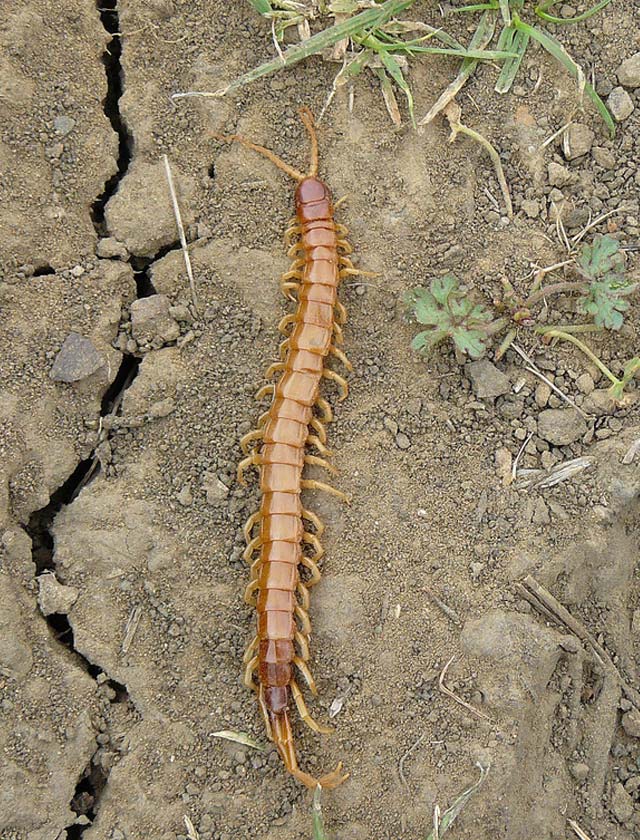Most adults are 1-2˝ long, but some can be up to 12˝ long in warm areas. Centipedes have characteristic body parts that distinguish them from other arthropods including elongated, segmented and flattened bodies. Each segment supports one pair of legs, with most species having 15 or more segments. Centipedes have distinct mouthparts for eating. Most notably they have enlarged claws that are adapted from the first pair of legs . These claws, called forcipules, contain a poison which is injected into prey to kill it. At the posterior end, centipedes have another specialized pair of legs that are elongated and capable of grabbing and holding prey while the forcipules inject the venom.
Other identifying features include coloring. Centipedes are usually brown or grey in color, but exact coloring and markings vary among species. As well, they have two, highly segmented antennae.
Despite the name, centipedes can have a varying number of legs from under 20 to over 300. All centipedes (discounting individual mutants) always have an odd number of pairs of legs, e.g. 15 or 17 pairs of legs (30 or 34 legs) but never 16 pairs (32 legs). A key trait uniting this group is a pair of venom claws or forcipules formed from a modified first appendage. Centipedes normally have a drab coloration combining shades of brown and red. Size can range from a few millimeters in the smaller Lithobiomorphs and Geophilomorphs to about 30 cm in the largest Scolopendromorphs.



















